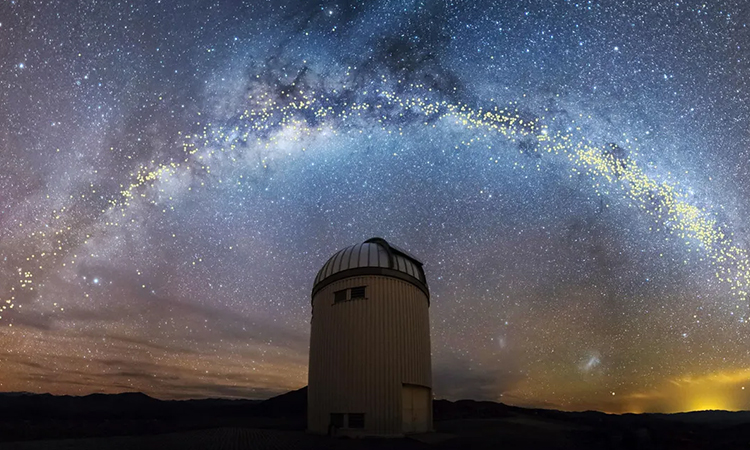Monitoring Desk
ISLAMABAD: A study published on Thursday found that the amount of light pollution is fast increasing and, in some areas, the visibility of stars that could be seen with the naked eye at night is decreasing by more than half in just 20 years.
Light pollution and night skies
Researchers claimed that the increase in light pollution, or skyglow, was far more significant than that found in satellite views of Earth at night. Their findings were published in the journal Science.
The researchers analyzed star observations from 2011 to 2022 supplied by more than 51,000 “citizen scientists” from around the world to study how the brightness of the entire sky has changed due to artificial light.
Participants in the project “Globe at Night” were given maps of stars and assigned to compare them at their location in the night sky. The US National Optical-Infrared Astronomy Research Laboratory runs this project.
According to the researchers, the variation in the reported number of visible stars was equal to an average increase in sky brightness of 9.6 percent every year throughout the participant locations. Given such star brightness variation over 18 years, a location with 250 visible stars would see that number drop to 100.
Most naked-eye star observations came from the United States and Europe, said Christopher Kyba, one of the study’s authors. Still, there was also good participation in South Africa, Japan, and Uruguay.
The researchers said the rate of change in light emission is greatest in nations with the fastest rises in economic growth. Thus the trend in skyglow on a global scale that we measure likely understates the trend in those nations.
The study was conducted simultaneously after numerous outdoor lights were switched over to light-emitting diodes (LEDs). However, the researchers stated it was unclear whether this change affected skyglow.
Because of spectral shifts or a rebound effect, in which the high luminous efficacy of LEDs results in the installation of more or brighter lights or longer operating hours, some researchers have projected that it will be good; others have predicted that it could be damaging, they added. The survey found that the global LED market share for new general lighting increased from 1% in 2011 to 47% in 2019.
The researchers said, “the visibility of stars is eroding rapidly, despite the introduction of LEDs in outdoor lighting applications. Current lighting policies are not playing any role in preventing the increases in skyglow, at least on global and continental scales.”
A physicist at the German Research Center for Geoscience, Kyba, told AFP that while the team could evaluate erosion of star visibility due to skyglow, only a little research has been done on its ecological impact.
“There’s tons of research on light shining directly on animals and plants,” he said. “But it’s tough to do experiments on the impact of skyglow. You’re not going to do something like just turn off New York City and see what happens in the East River. Science aside, light pollution has changed the character of the night sky. For all of human history, when people went outside at nighttime, they were sort of confronted with the cosmos, at least on clear nights with no moon,” Kyba said.
He said, “You’d walk outside, and there are the stars, the Milky Way. It’s there, and it’s shining down on you. And now that’s like an unusual experienced. It surely makes a difference to us as people that we don’t have this experience that used to be a universal experience.”
The Globe at Night campaign hosts an interactive data map at globeatnight.org and seeks volunteers to collect more observations in 2023.
























